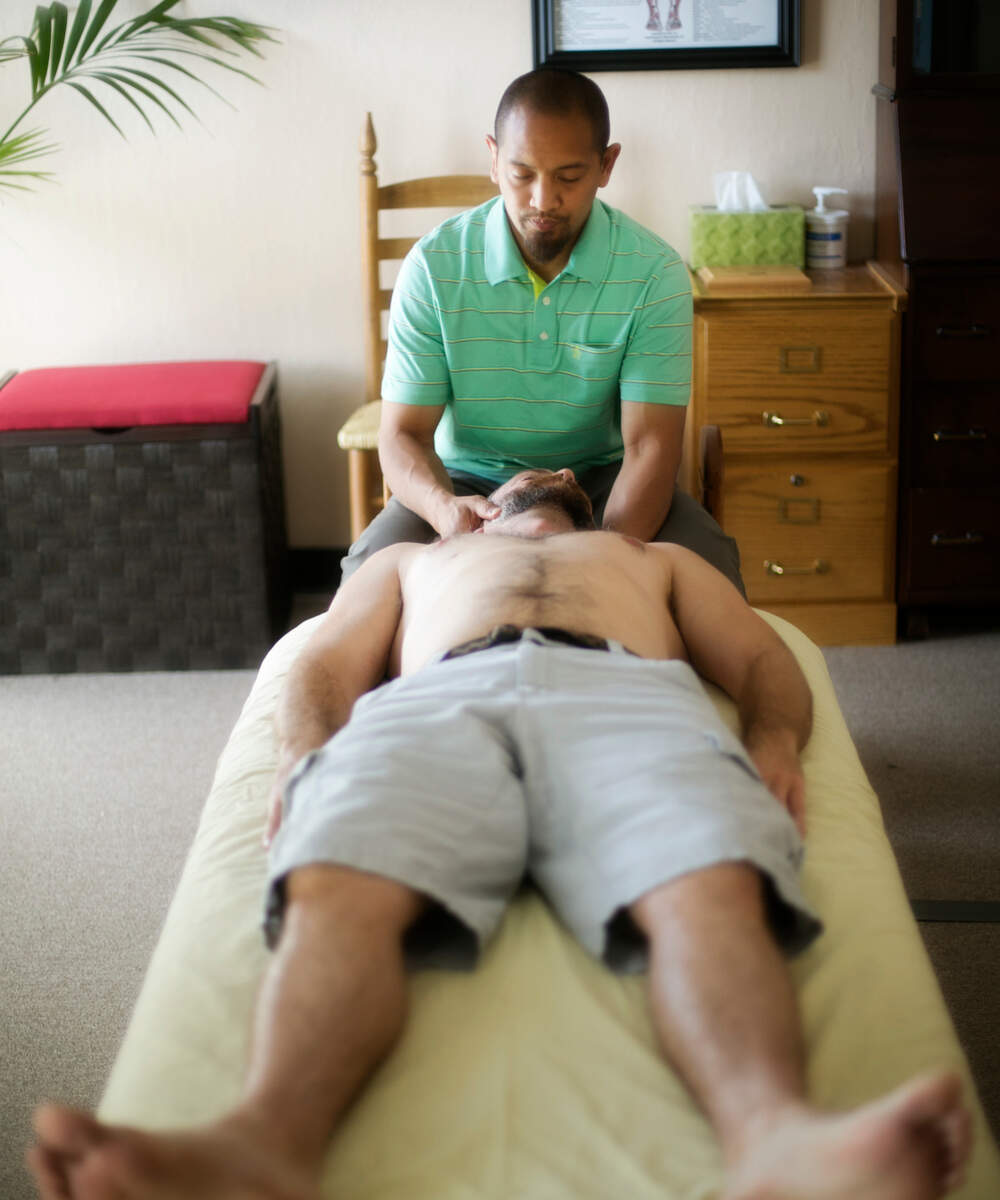Looking for a holistic approach to improve your mobility and function in daily activities? Functional movement therapy might be just what you need. Unlike traditional therapies that focus on symptom management, functional movement therapy addresses the root cause of movement dysfunction. By combining techniques such as soft tissue massage and FMS (Functional Movement Screen), this therapy aims to optimize your body’s ability to move efficiently and pain-free. Whether you’re an athlete looking to enhance performance or someone seeking relief from chronic pain, functional movement therapy can benefit individuals of all ages and fitness levels. Discover how to choose the right therapist for your needs and embark on a journey towards better movement and overall well-being.
Importance of Functional Movement in Physical Health
Enhancing Overall Physical Health
Functional movement plays a crucial role in maintaining our physical health and preventing injuries. It goes beyond simply exercising or lifting weights; it focuses on how our bodies move and function in everyday activities. By improving functional movement, we can enhance our overall physical well-being.
Improving Posture, Balance, Coordination, and Flexibility
One of the key benefits of functional movement is its ability to improve posture, balance, coordination, and flexibility. When we have good functional mobility, we are better able to maintain proper alignment and posture throughout the day. This can help alleviate muscle imbalances and reduce the risk of chronic pain or injury.
Furthermore, functional movement exercises challenge our balance and coordination skills. By incorporating movements that require stability and control, we can improve our body’s ability to perform tasks with precision and efficiency. These exercises promote flexibility by stretching and lengthening muscles, allowing for greater range of motion.
Enhancing Athletic Performance and Everyday Activities
Whether you’re an athlete or simply want to excel in your daily activities, functional movement is essential. It helps us perform at our best by enhancing athletic performance through improved strength, power, agility, and speed. Functional movement training focuses on movements that mimic real-life scenarios or sports-specific actions.
Moreover, functional movement therapy benefits everyone in their daily lives as well. From carrying groceries to climbing stairs or even playing with children or grandchildren – having good functional mobility enables us to move with ease and confidence.
Incorporating functional movement into our fitness routines not only improves our physical health but also enhances the quality of our lives overall.
Principles and Techniques in Functional Movement Therapy
Techniques Utilized in Functional Movement Therapy
Functional movement therapy incorporates a range of techniques to address musculoskeletal issues and improve overall movement patterns. These techniques include corrective exercises, manual therapy, and neuromuscular reeducation.
Corrective exercises are designed to target specific muscle imbalances and weaknesses. By focusing on these areas, therapists can help individuals improve their strength and stability, which ultimately enhances their overall movement quality.
Manual therapy involves hands-on techniques that aim to improve soft tissue extensibility and joint mobility. Therapists may use various methods such as massage, stretching, and joint mobilization to alleviate pain, reduce muscle tension, and enhance flexibility.
Neuromuscular reeducation is another important aspect of functional movement therapy. This technique focuses on improving the communication between the brain and muscles to optimize movement patterns. Through specific exercises and movements, individuals can develop better coordination, balance, and control over their body’s movements.
Principles of Functional Movement Therapy
Functional movement therapy is guided by several key principles that form the foundation of treatment plans. These principles include addressing muscle imbalances, enhancing stability and mobility, promoting proper movement patterns, individualizing treatment plans based on each person’s unique needs.
Addressing muscle imbalances is crucial in functional movement therapy as it helps correct any asymmetries or weaknesses that may contribute to pain or dysfunction. By identifying these imbalances through assessments or screenings, therapists can develop targeted interventions to restore balance within the body.
Enhancing stability and mobility are essential for optimal movement function. Therapists work with individuals to improve joint stability while also increasing flexibility to ensure a full range of motion during daily activities or sports performance.
Promoting proper movement patterns is at the core of functional movement therapy. By teaching individuals how to move efficiently using correct biomechanics, therapists help prevent future injuries while maximizing performance potential.
Choosing the Right Functional Movement Therapist
Specialized Training and Certification
When searching for a functional movement therapist, it is crucial to look for someone with specialized training and certification in this field. Functional movement therapy requires specific knowledge and expertise to effectively assess and treat movement dysfunctions. Look for therapists who have undergone additional training or have obtained certifications in functional movement therapy. This ensures that they have a deep understanding of the principles and techniques involved.
Experience with Similar Conditions or Goals
Consider the therapist’s experience working with conditions or goals similar to yours. Each individual has unique needs, so finding a therapist who has successfully treated cases similar to yours can be beneficial. For example, if you are recovering from a sports injury, look for a therapist who has experience working with athletes or sports-related injuries. Their familiarity with your specific condition or goal can enhance their ability to develop an effective treatment plan tailored to your needs.
Reviews and Recommendations
Reading reviews or seeking recommendations from trusted sources can help you find a reputable functional movement therapist. Online platforms such as Google reviews or healthcare directories often provide insights into patients’ experiences with different therapists. Ask friends, family members, or healthcare professionals if they can recommend any therapists they trust. Personal recommendations carry weight as they come from individuals who have firsthand experience with the therapist’s services.

Understanding Functional Movement Screening and Assessment
Functional movement screening is a valuable tool that helps identify limitations, imbalances, or dysfunctions in movement patterns. By observing various movements such as squatting, lunging, bending, pushing, pulling, and rotating, therapists can gain insights into a person’s overall movement quality.
These screenings provide crucial information for designing personalized treatment plans. For example, if someone demonstrates poor squatting mechanics during the screening process, it may indicate weaknesses or restrictions in their hips or ankles. This knowledge allows the therapist to focus on specific areas during therapy sessions to improve overall movement efficiency.
Movement assessments play a vital role in understanding an individual’s unique needs and tailoring treatment accordingly. Whether it’s addressing postural imbalances or rehabilitating from an injury, functional movement screening provides a comprehensive evaluation of an individual’s physical capabilities.
Integrating Corrective Exercises for Better Outcomes
Corrective Exercises Target Specific Muscle Imbalances or Dysfunctions
Corrective exercises play a crucial role in the functional movement therapy process. These exercises are designed to target specific muscle imbalances or dysfunctions identified during the assessment process. By addressing these imbalances, therapists aim to restore proper movement patterns and improve overall function.
Restoring Proper Movement Patterns
The main goal of corrective exercises is to restore proper movement patterns in the body. When muscles become weak or tight, it can lead to compensatory movements and inefficient biomechanics. Through targeted exercises, therapists can help strengthen weak muscles and stretch tight ones, ultimately improving movement quality.
Strengthening Weak Muscles and Stretching Tight Ones
Therapists may prescribe a variety of corrective exercises based on individual needs. Some exercises focus on strengthening weak muscles, while others target stretching tight ones. For example, push exercises like chest presses can help strengthen the upper body, while stability exercises like planks can enhance core stability. On the other hand, pull exercises such as rows can strengthen the back muscles.
Addressing Muscle Imbalances with Regressions and Progressions
In some cases, individuals may have muscle imbalances that require gradual progression or regression of exercise difficulty. Therapists utilize regressions (easier variations) and progressions (more challenging variations) to address these imbalances effectively. For instance, if someone struggles with a hip hinge exercise like a deadlift due to poor mobility or strength, they may start with regressions such as spine extensions before progressing to straight leg raises.
Role of Multi-Joint Movements in Therapy
Multiple Muscle Groups Working Together
Multi-joint movements play a crucial role in therapy for improving functional movement patterns. These movements involve multiple muscle groups working together to perform a task. By engaging various muscles simultaneously, they mimic real-life activities and enhance overall strength, stability, and coordination.
Improving Functional Movement Patterns
Incorporating multi-joint movements into therapy can have significant benefits. These movements target joint mobility and help address mobility limitations that may be hindering proper movement. For example, the hip hinge is a multi-joint movement that focuses on hip mobility and motor control. It involves hip abduction, extension, medial rotation, and lateral rotation. By practicing these movements under the guidance of a functional movement therapist, individuals can improve their range of motion and develop better motor control.
Enhancing Strength and Stability
Multi-joint movements also contribute to building strength and stability throughout the body. When performing these exercises correctly, individuals engage various muscle groups simultaneously, leading to improved overall strength. For instance, incorporating multi-joint movements like squats or lunges into therapy sessions can help strengthen the lower body muscles while promoting proper alignment and reducing knee pain or knee valgus (inward collapse).
Coordination and Motor Control
Another advantage of integrating multi-joint movements is the enhancement of coordination and motor control. As individuals practice these complex movements repeatedly with guidance from a functional movement therapist, they learn how different muscle groups work together harmoniously. This increased coordination translates into improved performance during daily activities or sports.
Progressing Through Functional Movement Patterns
Gradually Increasing Complexity and Intensity
Functional movement therapy is a dynamic approach that focuses on improving the body’s ability to perform everyday movements efficiently and without pain. One of the key aspects of this therapy is progressing through various functional movement patterns based on individual capabilities and goals.
Therapists understand that each person has different strengths, weaknesses, and limitations. They carefully assess their clients’ movement patterns to identify any compensatory or dysfunctional movements that may be hindering their progress. By addressing these issues, therapists can help clients improve their fundamental movement patterns and enhance overall functionality.
To ensure continued improvement, therapists gradually increase the complexity and intensity of exercises as clients become more proficient in executing them correctly. This progression challenges the body’s adaptability, forcing it to constantly learn new motor skills and develop greater strength, stability, and mobility.
Preventing Plateaus in Therapy
Progression is crucial in functional movement therapy because it prevents plateaus in therapy. When individuals reach a certain level of proficiency with a particular movement pattern or exercise, they may stop seeing significant improvements if they continue performing the same routine repeatedly. By introducing new challenges through progressions, therapists keep the body engaged and continuously adapting.
For example, if someone has mastered a basic squatting motion, their therapist might introduce variations such as adding weightlifting or incorporating segmental patterns into their squats. These progressions not only provide new stimulus for the muscles but also enhance motor learning by teaching the body how to coordinate multiple movements effectively.
Embracing Evidence-Based Interventions for Optimal Function
Evidence-Based Interventions: The Key to Success
Functional movement therapists understand the importance of evidence-based interventions in their practice. By relying on interventions that are supported by scientific research, they can ensure optimal outcomes for their patients. These interventions have been proven effective through rigorous evaluation and analysis.
Staying Up-to-Date with Advancements
To provide the most effective treatments, functional movement therapists stay updated with the latest advancements in their field. They constantly review new research studies and attend conferences to enhance their knowledge and skills. This commitment to staying informed allows them to incorporate innovative techniques into their practice.
Ensuring Optimal Outcomes and Patient Satisfaction
By utilizing evidence-based interventions, functional movement therapists can optimize patient outcomes and satisfaction. These interventions are tailored to address specific dysfunctions or dysfunctional movement patterns that may be hindering an individual’s ability to perform daily activities. Through a comprehensive diagnostic system, therapists can identify the root cause of dysfunction and develop targeted treatment plans.
For example, when treating back pain, functional movement therapists consider regional interdependence—the idea that dysfunction in one area of the body can affect other areas. They focus not only on alleviating symptoms but also on improving overall function and preventing future injuries.
These therapists utilize interventions such as tissue extensibility techniques or exercises targeting disc pathology based on clinical experience and evidence-based practices. They monitor progress closely using objective measures and discharge criteria to ensure that patients achieve their goals before completing therapy.
Conclusion
Congratulations! You’ve now gained a comprehensive understanding of functional movement therapy and how it can positively impact your physical health. By exploring the principles, techniques, and considerations for choosing the right therapist, you are equipped with the knowledge to make informed decisions about your rehabilitation journey.
Now that you have this valuable insight, take action! Reach out to a qualified functional movement therapist who aligns with your needs and goals. Don’t hesitate to ask questions and discuss your expectations. Remember, your commitment and active participation are crucial for optimal results. Embrace the evidence-based interventions and corrective exercises recommended by your therapist, allowing yourself to progress through functional movement patterns.

Embracing Functional Movement Therapy for Injury Recovery: Your Journey to Enhanced Mobility with MedicinEvolution!
Are you facing challenges in your athletic endeavors due to a sports injury, battling discomfort, and restricted movement? Look no further than MedicinEvolution for a solution. Here, the principles of Functional Movement Therapy are meticulously employed to address your sports-related injuries, paving the way for a more effective and holistic recovery. Say farewell to the limitations brought on by muscle imbalances, overuse, and repetitive sports actions—as MedicinEvolution delves deep into the underlying causes of your injury, fostering a profound healing journey. Their adept techniques promise a significant shift away from the pain and mobility issues that have been impacting your sports performance.
If you’re dealing with ongoing discomfort, stiffness, or the exasperating constraints of a sports injury, their tailored Functional Movement Therapy is crafted to cater to the unique demands of your situation. Don’t allow setbacks from injuries to dictate your sports narrative—seize control and book your appointment with MedicinEvolution now! Step into the world of Functional Movement Therapy and commence a journey toward a more dynamic, pain-free lifestyle. Your body, along with your sporting goals, will thank you!





